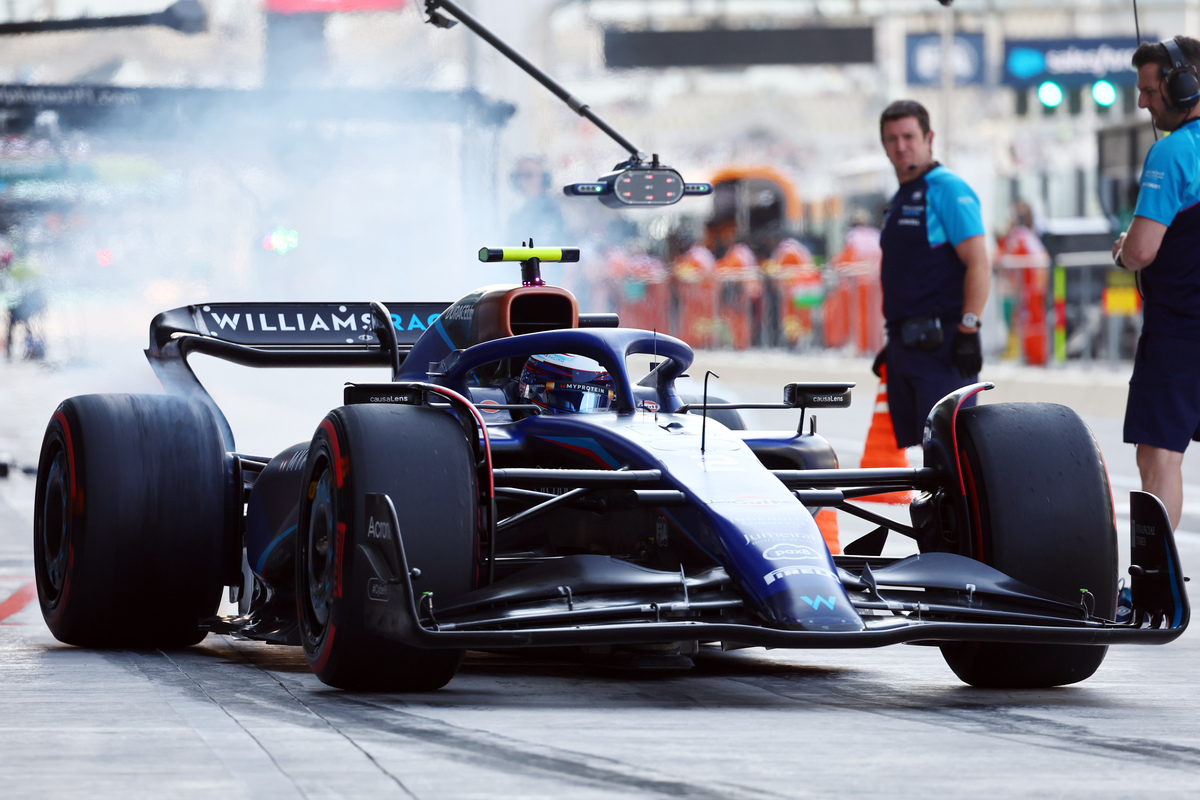

In 2023, Williams enjoyed some standout performances, with Alex Albon’s drives at the British and Canadian Grands Prix chief among them.
The Thai-licensed driver faded to 11th at the chequered flag in Silverstone but qualified inside the top 10 – nd was fourth fastest at the end of Qualifying 2.
In Canada, he was a cork in the bottle during the race as he delivered the equal best result of the season for Williams with seventh.
It was a similar story in Belgium, Monza, and again in Las Vegas, all high-speed, low-downforce circuits, when the FW45 came to life.
“We optimised the car around an efficiency level that meant that when you pulled the rear wing off, when you pull the downforce off, it became a very competitive package,” Vowles told Speedcafe as part of the KTM Summer Grill.
That trait resulted from a decision made in the early design of the FW45, which saw the car optimised for high speed over high downforce.
“You develop in different wind tunnels at different levels, if that makes any sense,” Vowles explained.
“You can choose whether you want to optimise your car on a low wing level or a higher level, and then you develop everything around that point – your balance, your characteristics, your downforce.
“That doesn’t mean you can’t add wing and take away wing, as teams do, but it does mean your optimum, where you position it, is in a slightly different region.
“The benefits of having a car there are exactly what happened at Silverstone, and in Monza, and in Montreal; once you get ahead of cars, you’re a bit of a roadblock.
However, while that proved a strength at some events, in others, it was a weakness.
“The converse, though, is that you put the downforce on to the Abu Dhabi’s of this world, and Mexico’s of this world, even Brazil to a certain extent, we just don’t have the downforce other people have,” Vowles reasoned.
“We’re not optimised around that range. So it’s not an ‘and’ in that circumstance; it’s an ‘or’.
“It did mean that there were tracks that we really suffered, and you saw us go backwards significantly.”
Another strength of the FW45 was its ability to switch on the tyres.
Getting the Pirelli rubber into the extremely narrow operating window, typically less than five degrees, is key to performance in F1.
However, it’s a trade-off, as getting the tyres working earlier usually means they’re being worked harder, resulting in higher degradation.
Early performance therefore came at the cost of longevity.
That’s the battle Williams found itself grappling with in 2023; it enjoyed strong qualifying performances only to slip backwards in the races.
“It’s why you saw in Vegas, we were there in qualifying. We could just switch the tyres on whereas a number of other teams can’t,” Vowles said.
“But the converse weakness was we did have more degradation than other cars.
“Again, you put them hand-in-hand; there’s some strengths that are also weaknesses.
“And the other weakness was, in certain conditions, the balance was really tricky for the drivers to handle,” he added.
“You saw that with both drivers; it could be there maybe on a single lap with all the grip holding you up, but as the grip disappeared, it became a tough car to handle.”
Williams ended the year seventh in the constructors’ championship with 28 points, all but one of those courtesy of Albon.
The Grove-based squad, which is owned by American investment firm Dorilton Capital, is set to launch its 2024 car on February 5.






















Discussion about this post